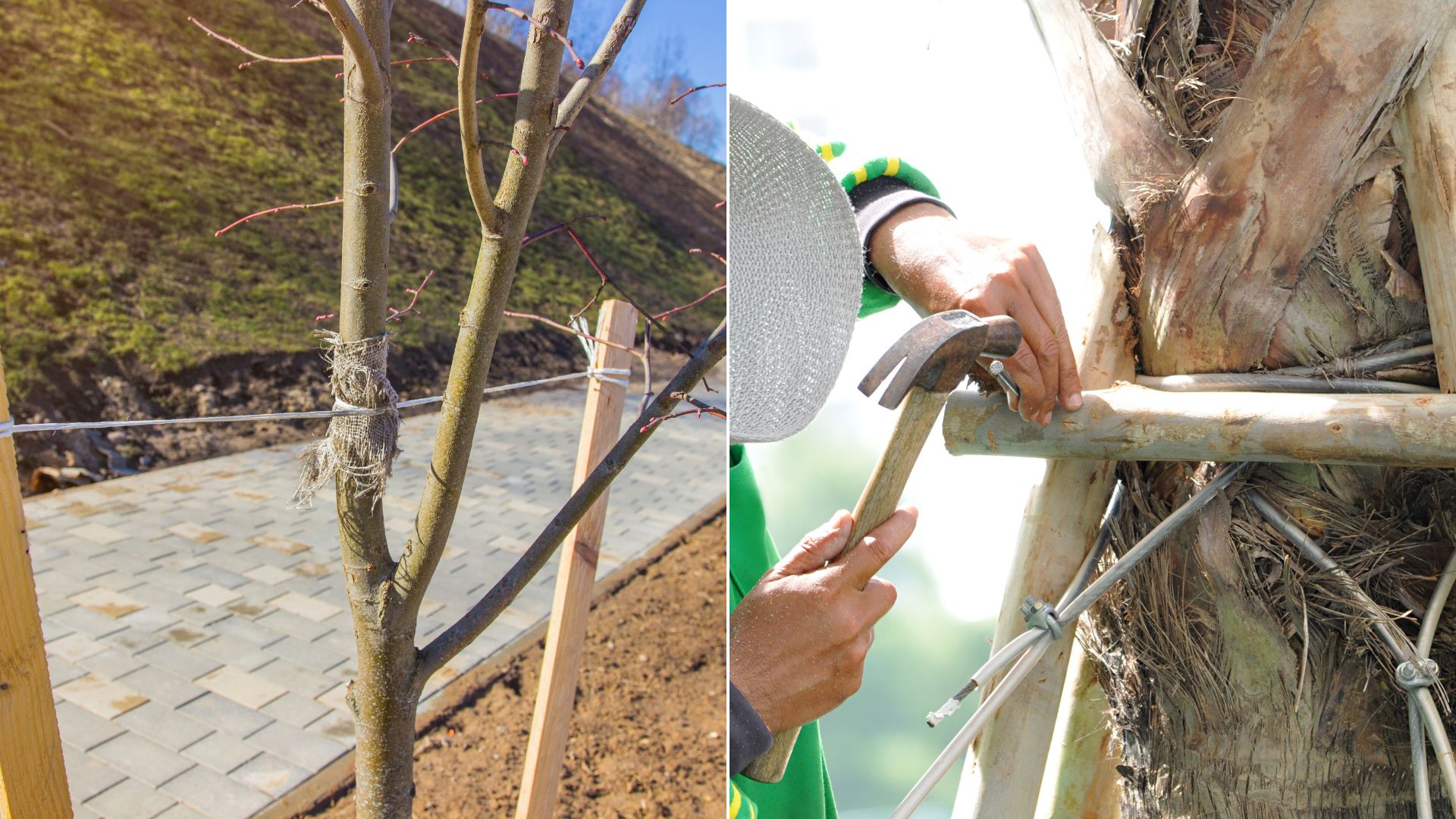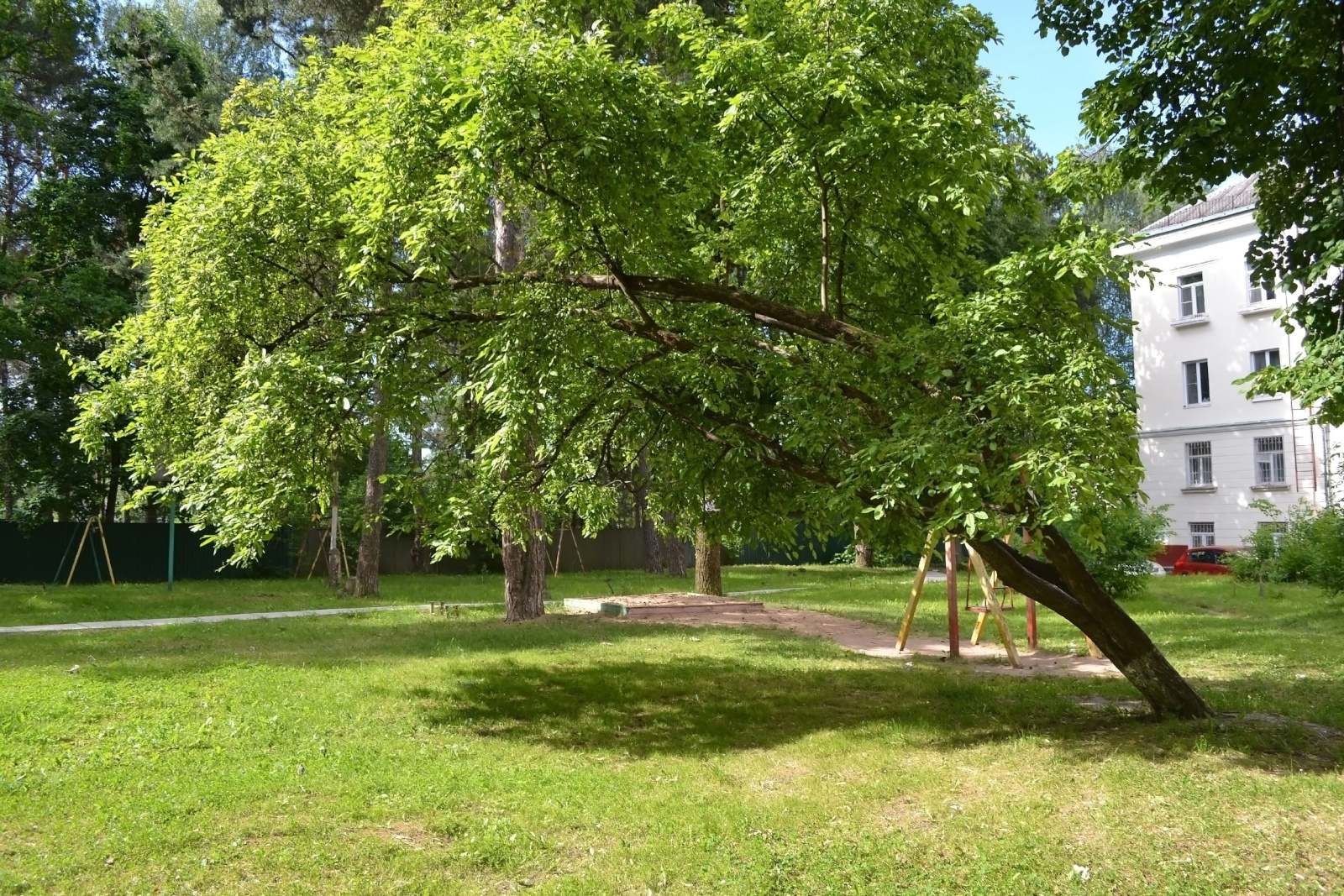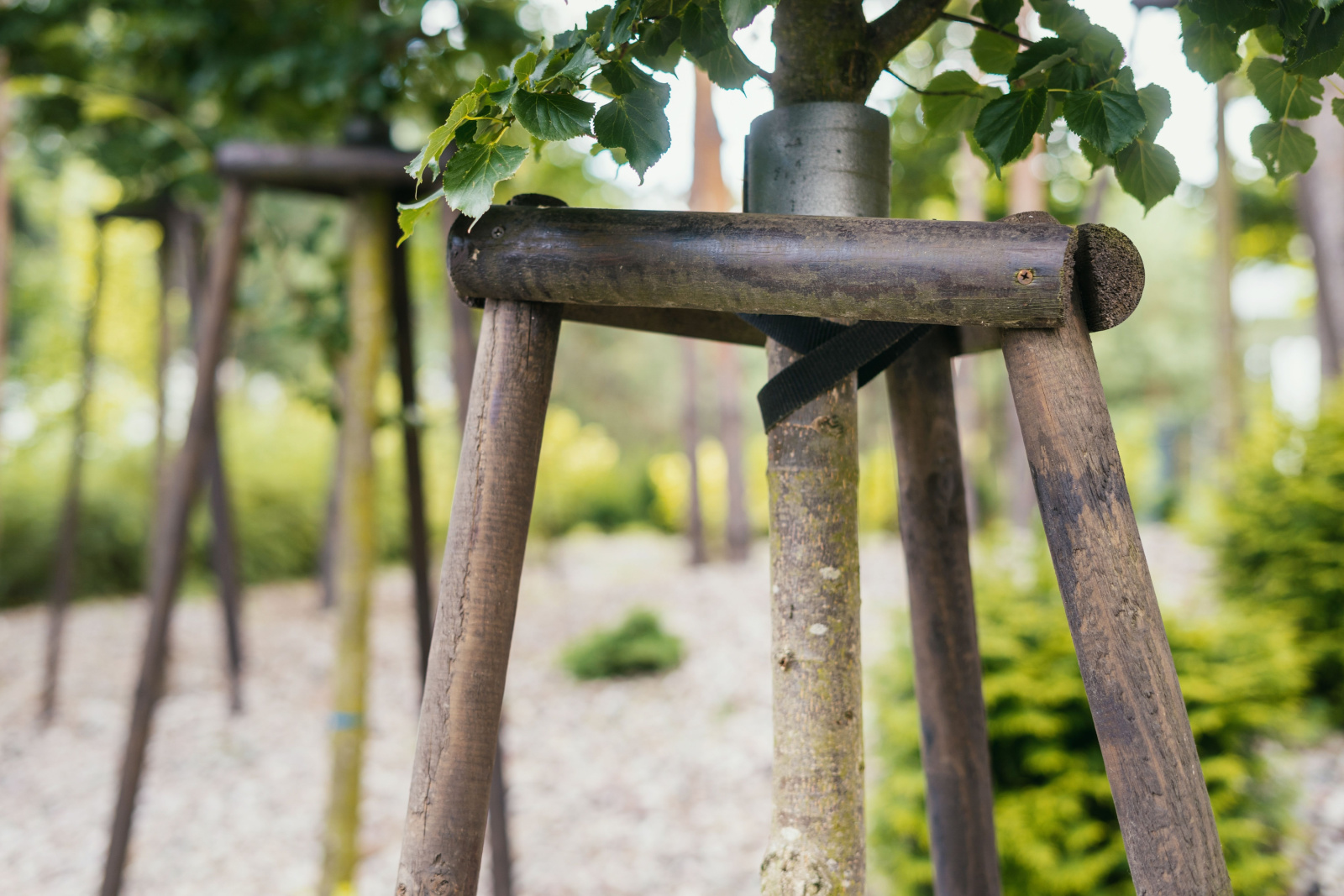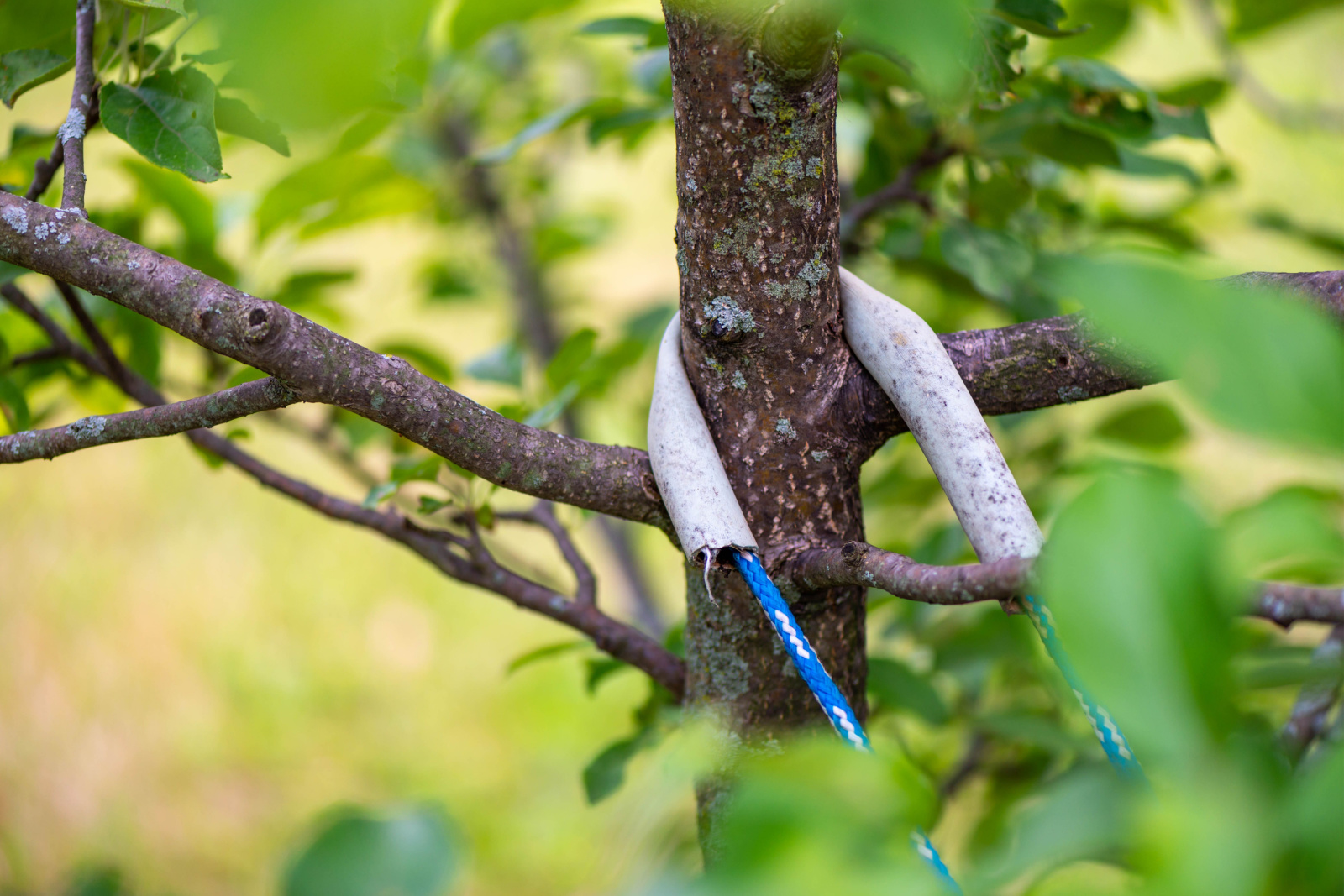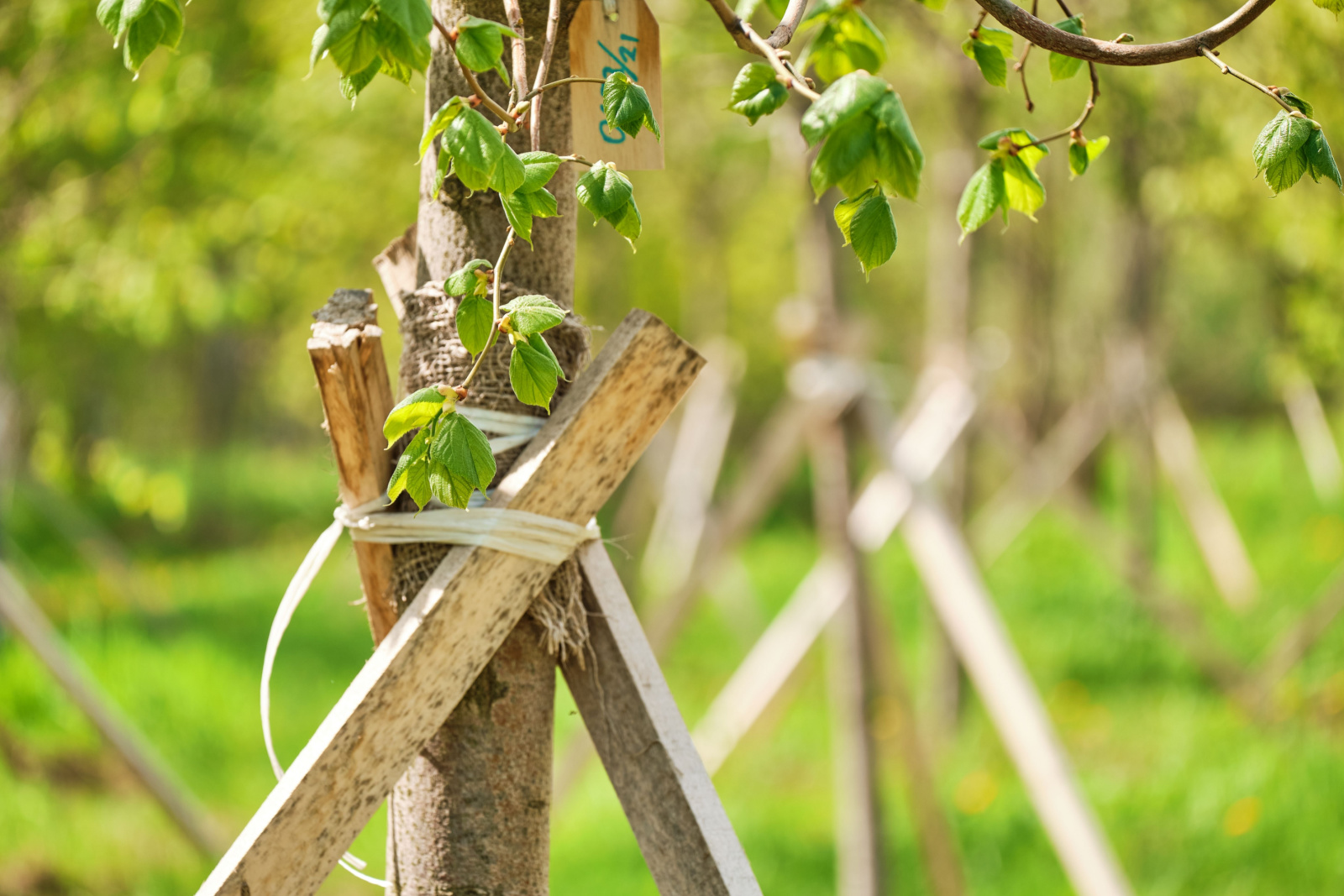If you ask a landscaper how to add a special touch of beauty to your landscape, one of their most common answers will be to grow trees. Trees will add aesthetic value and provide some shade, which is especially beneficial during hot summer days.
However, these plant species aren’t completely problem-free. One of the most common issues is leaning. It’s essential to fix this in time and determine the reason why it occurred in the first place.
Don’t worry; I’ll show you how to straighten a leaning tree in your yard, why you should do it, and how to prevent it from happening ever again!
Let’s get started!
Why Straighten A Leaning Tree?
A leaning tree does look unattractive but that’s not the main reason why you should straighten it. The problem is that your tree may be in serious danger because its roots are not stable enough and can’t hold it anymore.
You need to take all the necessary steps to get your tree back on track. Don’t worry, you likely won’t need to dig up or cut it.
In most cases, staking will help you fix the issue with a leaning tree. The good news is that this method also works on mature and larger trees facing the same issue.
Apart from staking, it’s also essential to determine the reason for leaning. We’ll discuss everything in the following sections.
When To Contact Professionals
The information above is mainly related to healthy trees. If your tree shows any signs of infection, then contacting a professional is essential.
The disease may be severe and this is the only cause when the arborist will remove your tree. Of course, they’ll try to treat it if there’s any chance for improvement.
If your tree is leaning due to a lightning strike, you should contact a local trimming service.
Steps For Straightening
Here is the straightening procedure.
1. Hammer The Stakes
Before you start straightening your tree, you should prepare about three to four wooden or metal stakes and some rope. Mark the spots for the stakes; there should be approximately a 2-3 feet distance between the stakes and the tree.
Pay attention to the root ball; if you have a larger tree, the distance should be bigger. Now take a hammer and secure the stakes in the marked spots.
When hammering, try to make an angle of 45 degrees toward the trunk. It’s better when the stakes are longer, especially if you have a large tree. Aim to hammer the stakes approximately a foot deep if you have tall trees to ensure enough support.
2. Maneuver The Tree
It’s time to position the tree in the right direction. You should wet the soil a little bit because it’ll be easier to manipulate the tree trunk.
Now you should start moving the root ball by pushing and pulling it. Be careful not to damage your tree during this process.
The next step is to tie the trunk using the rope by looping it around the stakes. It would be best if you could purchase straps specifically designed for this purpose because they will do less damage to the bark.
Don’t fasten the rope too tightly because the tree should still be able to slightly sway in the wind.
Prevent Damage In The Future
You should regularly check on your tree and if you notice it’s slightly leaning again, simply adjust it using the same procedure described above.
Don’t worry if the tree isn’t straightened completely right away. It can take months until it’s back in place, especially if the tree is tall.
Now check the conditions to determine the reasons for leaning. The first reason is soil that’s too loose because it prevents the roots from establishing fully.
The second reason might be high winds, so if you live in these regions consider installing a wind block.
The third reason is overly wet soil that prevents the tree staying in an upright position. In this case, it would be best to hill up the soil around the tree base.
Some low-maintenance trees require less water, so consider choosing one of them if you are planning to expand your tree collection.
Finally, the reason might be a too deep or too shallow planting hole. Make sure it’s as deep as the tree’s root ball.
There are many reasons to grow trees in our yards but bear in mind that issues can occur. If you have a leaning tree, simply follow our instructions to straighten it and make sure to meet its growing requirements, and protect it if needed.

